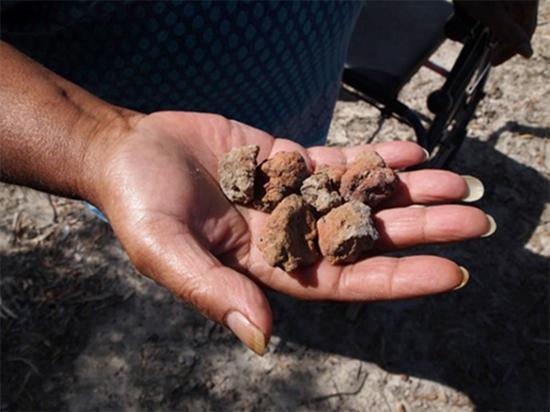Key Points
Aboriginal innovation and resilience revealed by research into traditional oven mounds used for cooking in Murray Darling Basin
An archaeological team from Flinders University and the River Mallee Aboriginal Corporation believe the ovens were used to soften aquatic plants
Radiocarbon dating at ANSTO of charcoal and shell revealed dates from 4000 years ago up to the time of European invasion
Radiocarbon dating at ANSTO has supported new archaeological research conducted by Flinders University and the University of Queensland that describes significant earth mound features used for cooking that were created by Aboriginal people in the Riverland region of South Australia.
The research published in The Holocene provides evidence of technological innovation and a transition in the use of food resources associated with changes in the wetland environment.
Approximately thirteen samples, comprising charcoal and freshwater mussel shell from the mounds, were analysed at ANSTO's Centre for Accelerator Science by Dr Vladimir Levchenko, which indicated dates from 4000 years ago up to the time of European invasion, according to co-author Dr Geraldine Jacobsen.
Both the charcoal and the shell contain carbon, which can be dated.
"The activity coincides with a period of climate change when the landscape went to a more arid environment. The archaeologists are hypothesising that with the climate changes and possibly an increasing population, the people had to explore new food sources, such as aquatic plants. They needed the earth ovens to process the plants for food and for other purposes," said Dr Jacobsen, who has also collaborated previously with Prof Amy Roberts and A/Prof Ian Moffat.
"The behaviour reflects innovation and resilience in the face of challenges," she added.
The samples with the oldest confirmed ages were found at the lowest excavation level, which is still the subject of further research to confirm.
The earth mounds were found during archaeological fieldwork conducted in collaboration with the River Murray and Mallee Aboriginal Corporation.
The team excavated six earth mounds on the Calperum Station floodplains to examine their contents using a range of scientific methods and to collect samples of charcoal and shell
Robert Jones, a PhD candidate at Flinders University, and the lead author of the paper says that the earth mounds were formed by the repeated use of earth oven cooking methods in the same location over extensive periods of time.
Earth oven cooking during the Pleistocene and the Holocene in Australia has been documented by archaeologists.

"Clay balls were used to retain the heat in the underground ovens, which we believe were primarily used to cook aquatic plants such as bulrush tubers, to be used for food and fibre production", said Jones.
"The introduction of this type of cooking on a large scale represents a major innovation in the lifeways of Aboriginal people in the Mid Holocene period, which would have had significant social and cultural implications", said co-author Professor Amy Roberts.
"The recent excavations of the hearths situated on Calperum station have revealed how our Ancestors used a variety of cooking techniques when there were large, constant gatherings of First Nations people. This recent find has highlighted our Ancestors' knowledge of different soils within the landscape and how clay was used for retaining heat", said Ms Fiona Giles, a spokesperson for the River Murray and Mallee Aboriginal Corporation.






